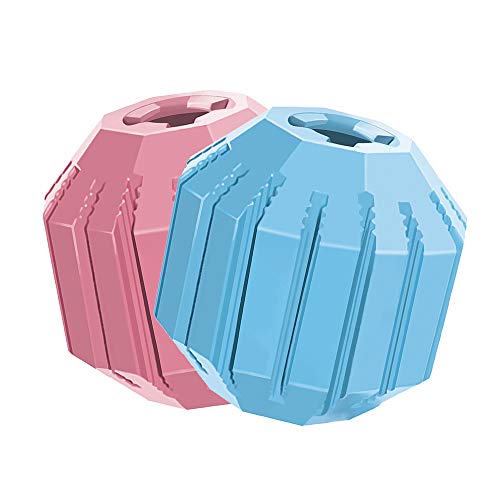| | Plaything obstructs, also called "building blocks," are solid forms used for building and construction play.
Some are straightforward planks constructed from timber. Others are fancy, like the interlocking bricks of plastic made by Lego and MegaBlox.
Yet whatever form they take, blocks can work as powerful understanding devices. Researches suggest that plaything blocks can assist youngsters develop
1. motor abilities and hand-eye control,
2. spatial reasoning,
3. cognitive adaptability,
4. language skills,
5. a capacity for innovative, divergent reasoning,
6. social proficiency, and
7. design abilities.
There is likewise evidence that complicated block-play is related to greater mathematical success.
How does it all happen? It's simple to see exactly how stacking as well as organizing plaything blocks can promote a kid's electric motor advancement. However, for other abilities, it's most likely that kids need to do greater than just move blocks about.
Research recommends that kids benefit when construction play incorporates added aspects, consisting of:
1. developing from layouts,
2. engaging in participating projects, and
3. speaking with others about spatial relationships.
Right here is a testimonial of the proof, and some ideas for enhancing block play.
1. Toy obstructs advertise far better spatial thinking
We understand there are web links between spatial abilities and also building play.
For example, when Yvonne Caldera as well as her coworkers observed the building tasks of 51 young children, they discovered a pattern:
The youngsters who revealed even more passion in building-- as well as constructed more sophisticated structures-- performed much better on a standard test of spatial intelligence (Caldera et al 1999).
The same pattern has actually been reported by others (Oostermeijer et alia 2014; Richardson et alia 2014; Jirout as well as Newcombe 2015). However obviously we can't assume that block-play causes children to establish remarkable spatial skills. Possibly causation functions the various other means. Youngsters with innovative spatial skills might be much more inspired to play with plaything blocks!
That most likely clarifies a few of the pattern. Yet there is also excellent factor to assume that building and construction play has developmental impacts.
When researchers assigned kindergartners to join a program of assisted construction play, these youngsters ultimately surpassed their peers on examinations of spatial visualization, block building, and also "mental turning"-- the capacity to turn as well as assess 3-D shapes in the "mind's eye" (Casey et alia 2008).
As well as a more recent speculative study checked the effects of organized block play-- the kind of play we participate in when we replicate a structure from a version or plan.
After a group of 8-year-olds participated in just 5, 30-minute sessions of organized block play, they showed improvements in psychological turning.
In addition, brain scans exposed modifications in the way their minds refined spatial information. Children in a control team did not exhibit these modifications (Newman et al 2016).
2. Structured block play might enhance cognitive adaptability
" Cognitive versatility" is the capability to promptly shift your emphasis from one appropriate stimulus to one more. It's plainly essential for success in college. But some children have problem with it, and also particular ecological factors-- like low socioeconomic standing-- put youngsters at higher risk for developmental hold-ups.
how do toy block someone on a track phone obstructs aid?
A current speculative research study recommends they might.
Sara Schmitt and also her coworkers randomly designated some youngsters to take part in daily sessions of structured block play.
In very early sessions, the tasks were reasonably basic (e.g., " construct a tower"). However as youngsters ended up being extra familiar with the materials, they were provided much more requiring tasks (e.g., "copy the framework you see in this picture").
The scientists really did not observe any kind of significant modifications with time. However by the end of study, the kids who 'd joined structured block play came along in cognitive adaptability, as well as this was particularly real for children from households of lower socioeconomic condition (Schmitt et alia 2018).
3. Toy blocks are linked with language growth
Might kids also get a language increase from building and construction play? That appears possible.
For example, there is proof that extremely children develop far better language skills when they engage in regular block play.
In a research funded by Mega Bloks, scientists offered blocks to center- as well as low-income kids (Christakis et al 2007). The youngsters ranged in age from 1.5 to 2.5 years, as well as were arbitrarily designated to get either therapies:
1. Children in the treatment team obtained 2 sets of toy Mega Bloks-- 80 plastic interlocking blocks and also a set of specialized blocks, including cars and trucks as well as people-- at the start of the research study. The moms and dads of these toddlers were given instructions for motivating block play.
2. Kids in the control team did not obtain blocks up until the end of the study. The parents of these children received no instructions regarding block play.
Moms and dads in both groups were asked to maintain time journals of their youngsters's tasks. Moms and dads weren't informed the actual function of the study-- only that their children became part of a research study of youngster time use.
After six months, each parent completed a follow-up meeting that consisted of an analysis of the youngster's spoken capacity (the MacArthur-Bates Communicative Development Inventories).
The results?
Kids in the team assigned to play with blocks
1. racked up greater on parent-reported tests of vocabulary, grammar, as well as spoken comprehension, and
2. showed a non-significant trend in the direction of enjoying much less TELEVISION
It's unclear why block play had this impact. One opportunity is that the children really did not truly vary after all-- it was just that moms and dads in the treatment team regarded greater language competence in their youngsters. Motivating block play might have inspired them to pay even more interest to their kids' growth.
But it's possible that parents in the treatment team spent more time talking with their kids, which can discuss the language gains. Children find out to chat by engaging in great deals of one-on-one conversations with other individuals.
There is also evidence that children establish an enriched understanding of spatial vocabulary when we speak with them about spatial partnerships.
In one current experiment, scientists instructed moms to use pertinent spatial language as they played with their 5-year-old children, and the initiative made a distinction: Kids subjected to this spatial talk were most likely to use spatial language themselves (Boriello and also Liben 2018).
4. Toy obstructs may stimulate creative, different analytical
Psychologists acknowledge two major kinds of problem. Convergent problems have only one right remedy. Divergent issues can be resolved in several ways.
Since children can create blocks in a range of ways, obstruct play is divergent play. As well as different play with blocks may prepare kids to assume artistically and also much better solve divergent issues.
In one experiment, researchers offered preschoolers with two kinds of play products (Pepler as well as Ross 1981).
1. Some children obtained products for convergent play ( challenge items).
2. Other youngsters were provided materials for divergent play (chunky, block-like foam shapes).
3. Children were provided time to play and after that were tested on their capacity to resolve issues.
The results? The children who played with blocks done better on divergent troubles. They additionally showed even more imagination in their attempts to fix the issues (Pepler as well as Ross 1981).
5. Cooperative building and construction play assists youngsters enhance social abilities
Study suggests that kids become friendlier and a lot more socially-savvy when they service cooperative building jobs.
For example, in studies of kids with autism, youngsters that went to play group sessions with toy blocks made higher social enhancements than did children who were coached in the social use of language (Owens et al 2008; Legoff and also Sherman 2006).
As well as research study on normally-developing kids suggests that kids who deal with participating tasks create higher-quality friendships (Roseth et al 2009). Visit Us Now. | | | |
|










